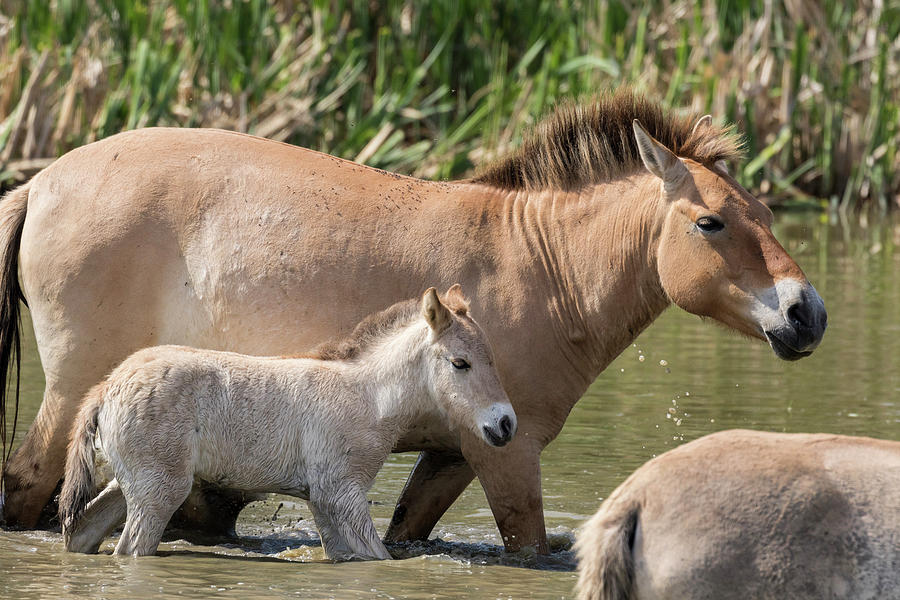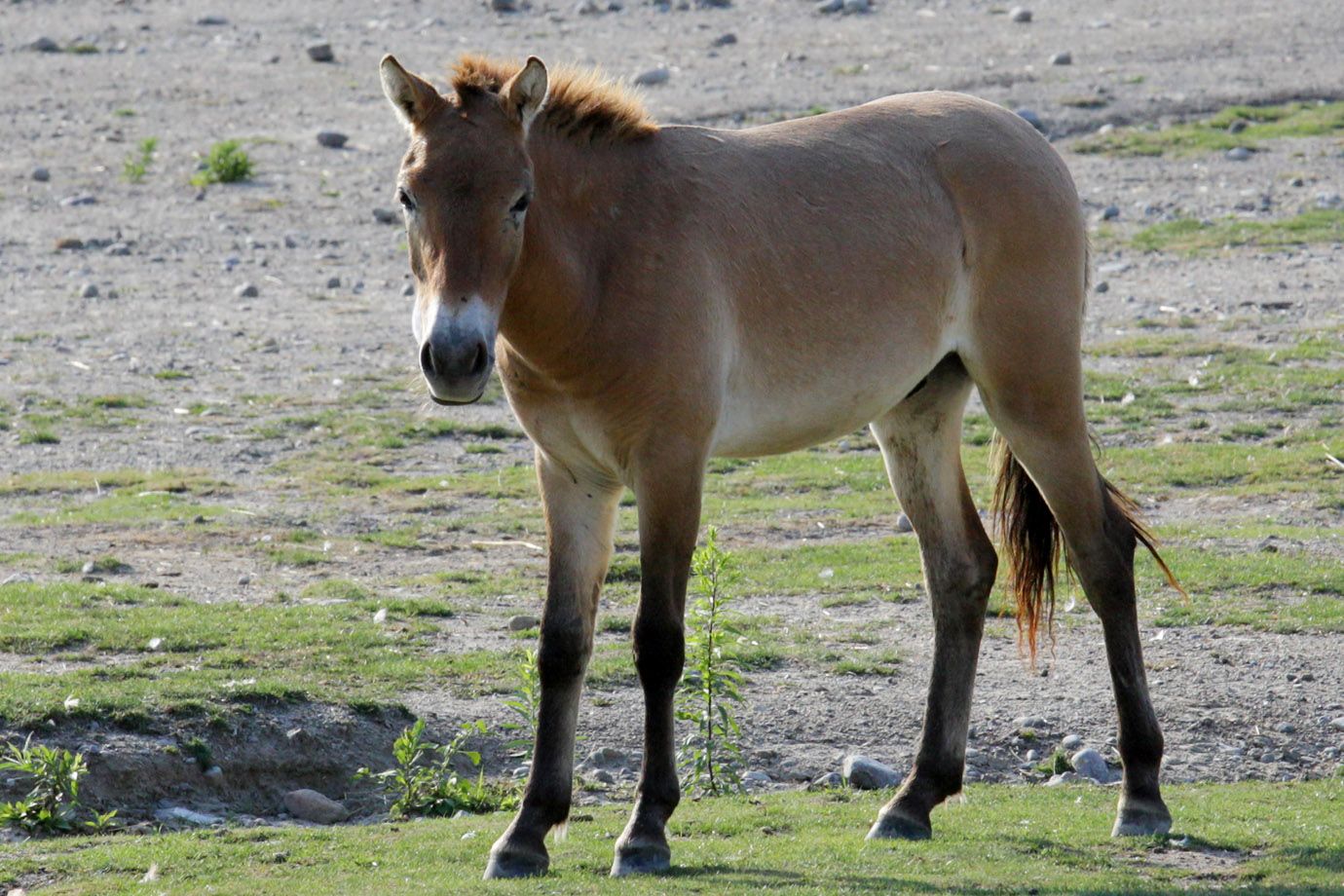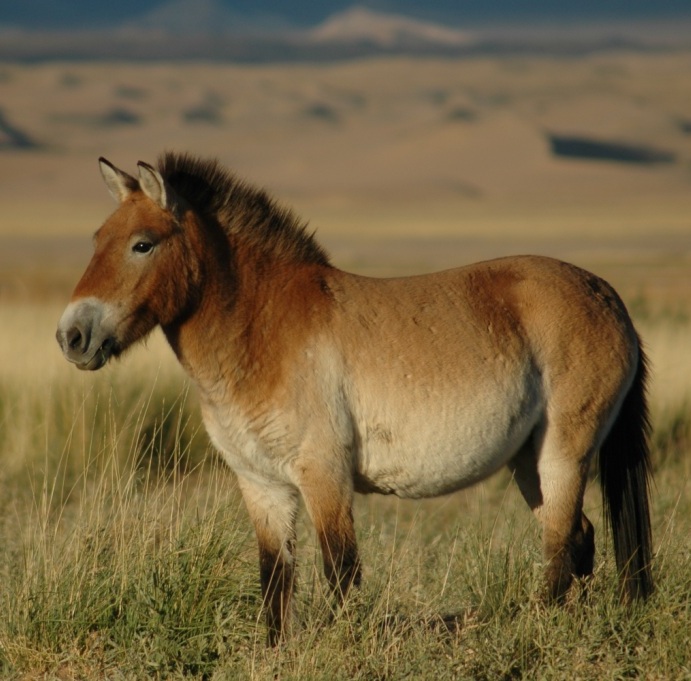
Przewalski's horse (Equus ferus przewalskii), 20191228 ZooChat
All extant wild horses belong to the subspecies Equus ferus przewalskii. The first visual account of Przewalski's-type wild horses date from more than 20,000 years ago. Rock engravings, paintings, and decorated tools dating from the late Gravetian to the late Magdalenian (20,000-9,000 BC), were

Przewalskis Horse Or Takhi (equus Ferus Photograph by Martin Zwick Pixels
The wild horse (Equus ferus) is a species of the genus Equus, which includes as subspecies the modern domesticated horse (Equus ferus caballus) as well as the endangered Przewalski's horse (Equus ferus przewalskii, sometimes treated as a separate species i.e. Equus przewalskii). The European wild horse, also known as the tarpan, that went extinct in the late 19th or early 20th century has.

Przewalski's Horse (Equus ferus przewalskii) ZooChat
Przewalski's horses (PHs, Equus ferus ssp. przewalskii) were discovered in the Asian steppes in the 1870s and represent the last remaining true wild horses.PHs became extinct in the wild in the 1960s but survived in captivity, thanks to major conservation efforts. The current population is still endangered, with just 2,109 individuals, one-quarter of which are in Chinese and Mongolian.

PrzewalskiFohlen (Equus ferus przewalskii) Schöpfung
Scientists at the Smithsonian Conservation Biology Institute's Conservation Ecology Center are committed to saving Przewalski's horses (Equus ferus przewalskii), the last of the truly wild horse species, through experimental GPS satellite tracking and reintroduction programs.Thanks to the efforts of zoos and conservation organizations around the world, including SCBI's CEC, the.

Przewalski's horse (Equus ferus przewalskii), 20200612 ZooChat
Equus ferus przewalskii. Przewalski's horses, critically endangered horses found in Mongolia, are the last truly wild horse. Once thought to be the ancestor to the domestic horse, they are actually distant cousins. Mitochondrial DNA suggests that they diverged from a common ancestor 500,000 years ago.

Przewalski Horse (Equus ferus przewalskii) by Anita Huszti Photo
The Przewalski's horse (Equus ferus przewalskii), the only extant species of wild horse, was extinct in the wild in 1960s.The wild horse has been successfully saved from extinction by captive breeding projects outside the historic range. Although multiple studies were conducted, the main problems such as loss of founder genes, inbreeding depression, hybridization with domestic horses, high.

Two wild Przewalski / Takhi Horse (Equus ferus przewalskii) stallions
Native to the steppes of Central Asia, Przewalski's horse (Equus przewalskii or E. ferus przewalskii) has long been considered the only remaining species of wild horse.

Тахь Takhi Przewalski's Horse Equus ferus przewalskii / Equus
Taxonomy. Horses were previously assigned to 2 different species, Equus caballus and E. przewalskii. In 1986 and 1994 Colin Groves, a leading taxonomist, proposed using E. caballus for all domestic horses and E. ferus for the 2 wild horses: . E. ferus przewalskii = Przewalski horse; E. ferus ferus = tarpan (extinct in the wild around 1897); Equus ferus przewalskii and E. caballus able to.

Przewalski's Horses (Equus ferus przewalskii) ZooChat
Equus ferus przewalskii. Przewalski's horses are icons of ancient history and modern conservation efforts. Smithsonian scientists track these animals to understand how they occupy their habitats and to preserve zoo's historical investment in the restoration of this species.

Przewalski's horse (Equus ferus przewalskii), 20200523 ZooChat
As an endangered subspecies of the wild horse (Equus ferus), the Przewalski's horse (Equus ferus przewalskii) is the world's last truly wild horse. It is stockier than domesticated horses, with shorter legs. The arrival of the herd in Villanueva de Alcorón represents a milestone for the restoration of the local landscape.

Przewalski's Horses (Equus ferus przewalskii) ZooChat
Although wild horses (of which Przewalski's horse Equus ferus przewalskii is the only living representative) can hybridize with domestic horses to produce fertile offspring (Ryder et al. 1978; Trommerhausen-Smith et al. 1979), the existence of 2n=66 chromosomes in Przewalski's horse identifies it as being more different from its domestic.

Тахь Takhi Przewalski's Horse Equus ferus przewalski… Flickr
Trinomial name. Equus ferus przewalskii. (Poliakov, 1881) Range map. Przewalski's horse is a rare, wild horse of Asia, Equus ferus przewalskii, characterized by a stocky built, a dark brown mane and tail, pale brown or dun-colored flanks, and often faintly striped legs. This large ungulate mammal is the last remaining wild horse (Equus ferus.

Equus ferus przewalskii Caballos, Bestiario, Prehistoria
Przewalski's horse, (subspecies Equus caballus przewalskii or E. ferus przewalskii), last wild horse subspecies surviving in the 21st century. It was discovered in western Mongolia in the late 1870s by the Russian explorer N.M. Przhevalsky.. Przewalski's horse is yellowish or light red (sometimes called dun) in colour, with a dark mane and tail and, usually, a dorsal stripe.

Przewalski's Wild Horse (Equus ferus przewalskii) ZooChat
Simple Summary: The Przewalski's horse (Equus ferus przewalskii), the only extant species of wild horse, was extinct in the wild in 1960s. The wild horse has been successfully saved from.

Przewalski´s horse (Equus przewalskii/Equus ferus przewalskii) hustai
Taxonomy. Przewalski's horse was formally described as a novel species in 1881 by Ivan Semyonovich Polyakov.The taxonomic position of Przewalski's horse remains controversial, and no consensus exists whether it is a full species (as Equus przewalskii); a subspecies of Equus ferus the wild horse, (as Equus ferus przewalskii in trinomial nomenclature, along with two other subspecies, the.

Equus Przewalskii (Przewalski’s Horse) Breed Information, History
1. Introduction. The Przewalski's horse (Equus ferus przewalskii) was first discovered in the Gobi Desert in Mongolia in 1880 by a Russian officer named Colonel Nikolai Przewalski; I.S. Poliakov was the first to scientifically document this species in 1881 (Poliakov, 1881).The last recorded sighting of a wild Przewalski's horse occurred in the Dzungarian Gobi of Mongolia in 1969 (Bouman.
